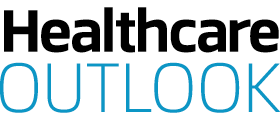We talk to Oasis Hospital in Al Ain, UAE, about the steps they have taken to reduce infant mortality rate from 50 percent to less than one percent.
Oasis Hospital, located in the UAE city of Al Ain, has two claims to fame. It was the birthplace of Sheikh Mohammed bin Zayed Al Nahyan, Crown Prince of Abu Dhabi. And, perhaps more importantly, it was the first private hospital in the UAE.
These days, UAE is considered to have a high standard of healthcare, with both a public and a private system. Last year, the government spent $13.7 billion on expanding access, improving the quality of healthcare services, and increasing private involvement in the sector. UAE is gearing up to be a hub for medical tourism, with profits topping $3.27 billion in 2018.
But in 1960, it was a completely different story. Back then, there was no healthcare system to speak of. In the desert city of Al Ain, tuberculosis, eye disease and malaria were rife, one in three women died in childbirth, and only half of babies born survived.
Sheikh Zayed – who would become the ruler of Abu Dhabi – governed the eastern region from Al Ain’s Muwaiji Fort. Witnessing the situation firsthand, he knew something had to change.
He and his brother, Sheikh Shakhbut, toured several hospitals in surrounding Arab states. In 1960, they visited an American mission in Muscat. They were so impressed with the quality of healthcare that they invited the couple in charge, Doctors Pat and Marian Kennedy, to come and set up a hospital in Al Ain.
And so Oasis Hospital was born.
The Kennedys set up shop in a mud-block guest house donated by Sheikh Zayed and began providing healthcare services. In their first year, they helped deliver two babies.
In their second, 67.
By 1964, they opened a small hospital – the first cement block building in Al Ain. It had 20 patient rooms, a nurses’ station and a nursery. This hospital was the sole source of medical treatment for the area’s inhabitants. Soon after opening, the staff were seeing around 200 patients a day.
Pat and Marian departed in 1975, but Oasis Hospital continued with its mission to provide quality healthcare services, underpinned by a Christian ethos of integrity and goodwill. In the early 1970’s, the hospital gained a delivery suite, x-ray facilities, additional patient rooms and staff housing. Obstetrics, Surgery and Children’s Health departments were added in 1985.
As the decades passed, Oasis Hospital modernised as rapidly as the country it was based in. In 2006, the hospital was acquired by CURE International, a Christian non-profit organisation dedicated to providing international healthcare. The remit of the hospital didn’t change. Brooks Glett, then President of Oasis Hospital, explained the hospital always had, and would, operate as a not-for-profit.
He explained: “Our primary vision remains: to provide quality, international health care and services for the communities we serve, and to be the hospital of choice for people and their families in Al Ain and neighbouring communities”.
Shortly afterwards, President Shaikh Khalifa bin Zayed Al Nahyan promised the hospital a $36.76 million grant to help facilitate an expansion. The planned expansion programme would see the hospital increase from a 40-bed capacity to a modern facility with 200 beds and multiple departments.
Back in 2008, President and CEO David Printy said: “The new facility will include patient care that supports the preservation of traditional practices of UAE family life and culture. Oasis Hospital has appointed an advisory board of leading men and women of the local community who will advise and guide the design.
“We are now embarking on construction of a complete new 200 bed, state-of-the-art hospital for the 21st century.”
By the time Oasis Hospital celebrated its golden jubilee in 2010, it had made a major contribution in reducing infant mortality rate and maternal mortality rate in Al Ain to under one percent.
On January 14, 2013, there was another landmark event at the hospital – the hospital’s 100,000th baby was delivered. Some of these babies were members of the ruling class, including Abu Dhabi’s Crown Prince, Sheikh Mohammed bin Zayed Al Nahyan. The figure also equates to over a fifth of the population living in the Al Ain region today. Considering that the population of Al Ain was around 2,000 when the hospital opened for business, the growth rate is remarkable.
The new hospital finally opened for business in 2015, after years of planning and preparation. Alongside an increased number of beds, it also featured a state-of-the-art maternity centre and 20 NICU beds. This confirmed the hospital’s status as the best hospital in the region for maternity and paediatric care.
These days, the hospital continues to expand and develop its provision. It has a number of departments, ranging from urology to radiology, where highly trained professionals carry out specialised techniques using state-of-the art equipment. There is an Urgent Care Clinic located just outside the entrance. It caters to patients who need non-emergency medical treatment, and is open 24 hours a day, seven days a week.
Although Oasis Hospital might have changed beyond recognition from a simple mud-brick guesthouse to a contemporary building with multiple departments, its ethos remains the same – to care for the community of Al Ain with compassion and cultural sensitivity.

























